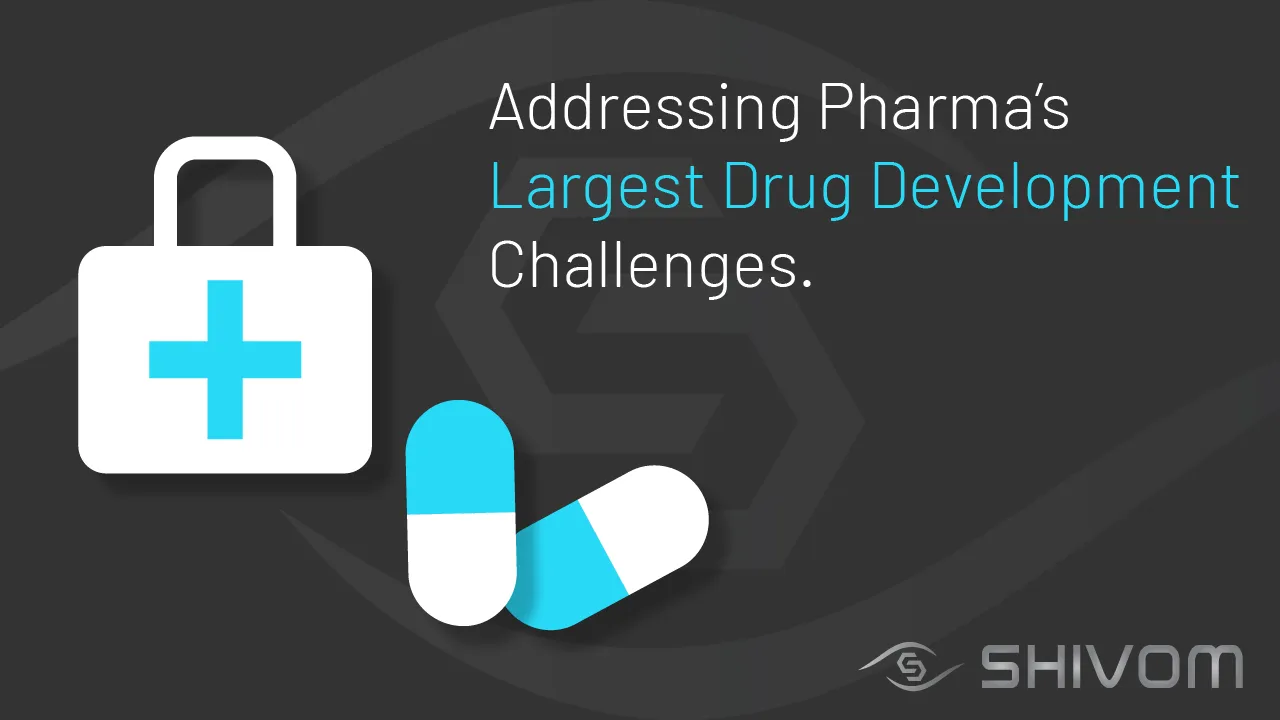
We live in a world where health care spending is upwards of trillions of dollars, and makes up nearly 18% of GDP in some countries. Yet at the same time pharmaceutical sales are sliding and healthcare improvements overall have stagnated. What is the root of this paradox? One answer is the substantial difficulty with which it has become to innovate in the drug development space.
Challenges in pharmaceutical drug development are vast, namely,
An aging population that suffers from numerous “complex” disease such as atherosclerosis, diabetes and Alzheimer’s disease to name a few. These disease are not associated with one genetic susceptibility variant, but rather with numerous genetic associations, as well as various epigenetic or environmental factors such as diet, exercise, smoking habits and more. This makes it difficult to understand the direct mechanism of disease, and therefore challenging to identify a successful treatment. This is further complicated by a heterogeneous patient population where individuals present with various degrees of pathology, and the inability to model these diseases adequately in a preclinical setting.
A slowdown in innovation, with reliance on similar compounds to those already on the market, targeting similar known mechanisms, or being of similar chemical structure to a drug that’s already successful. These follow-on drugs are known as “me too” compounds, and typically don’t generate a large amount of interest from pharma and investors as they are unlikely to become “blockbuster” drugs.
The above result in increasing costs to produce a novel compound. It now costs over one billion USD to produce on compound from discovery to commercialization. And the chances of success are low, less than 1 in 10 000 that a discovery compound will be successful, particularly one that will bring in significant revenue - a blockbuster drug. Additionally, patent expiries of previous blockbuster drugs are driving generics onto the market, hampering large pharma’s efforts to maintain let along increase their revenues.
Together this points to the growth in R&D spending overpowering the growth in sales.
How can genomics help pharma address these challenges?
Most novel research is now done by start-up companies which subsequently form partnerships with large pharma. This includes biomarker and diagnostic companies, many of which focus on utilizing unique genetic variants to create tests for disease susceptibility, clinical trial enrolment and drug response. More infrastructure is being put in place by regulatory agencies to incorporate analytics and diagnostic tests into routine health care to make precision medicine a health care reality. This means increased opportunities for genomics to play a role in drug discovery and drug development, and with over 3 billion DNA base pairs in the human genome, the prospects for identifying new variants that play important roles in disease are promising. This opens opportunities for discovery of entirely new disease mechanisms and thereby development of novel lead compounds, rather than “me too” or generic products, new patents for pharma, and an overall increase in innovation.
Genomics will help address the challenges in the heterogeneity of the patient population, where drugs that work for some patients often don’t work for others, and non-responders are often cycled through multiple treatment routes until an ideal treatment is found, or in some cases not found. This can lead to multiple rounds of side effects and wasteful drug spending. With genotyping, potential responders to a specific treatment can be identified and stratified ahead of time. This also alleviates numerous challenges in clinical trial design, where multiple failures increase the roadblocks to bring new treatments to market. Finally, with genomic testing, pharma can focus on early preventative care for complex disease, identifying unique susceptibilities to disease before it becomes too late to treat.
Shivom’s role in addressing these challenges:
Shivom will propel precision medicine and preventative health by amassing genomic data from unique patient populations which will generate value for pharma’s drug development programs. In order to address current issues with patient heterogeneity and inability to tailor treatments for unique patient groups, Shivom is targeting emerging healthcare markets like Asia, Africa and South America where numerous unique patient data is plentiful. Emerging markets are also now very attractive to big pharma as they look for ways to grow their sales. However these markets pose their own challenges, including those in the genomics space. Namely, a very limited number of individuals having been sequenced to date.
Shivom has developed a partnership with the Andhra Pradesh Province in India with commitment from the government to sequence their 60 million person population. With this, and other large genomics data sets, Shivom looks to partner with pharma and biotech companies to analyze these genomes for variants that may be associated with disease, including the 7000 rare disease, 95% of which don’t currently have a treatment.
By utilizing blockchain technology, Shivom will also help bring together disparate information from across fragmented markets, diverse health care systems, and complex regulatory systems to integrate data together into one interoperable platform.
In doing so Shivom will drive precision medicine forward and bring health care into a new era.